The best 75-inch TVs 2024: big-screen bliss
The best 75-inch TVs offer a true big-screen experience
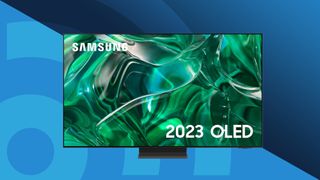
When it comes to getting a cinematic experience, the best 75-inch TVs can deliver something significantly closer to what you'd see at the cinema when stacked up against smaller models.
Having a TV of this size really has its advantages. Not only are details more noticeable thanks to the super-sized image, but you'll typically see brighter images with better contrast and richer colors, too.
In the past it's been prohibitively expensive to buy a 75-inch TV, because it was mostly only the very best TVs that came in these sizes. But that's not always the case these days – in fact, it's fairly easy to spot a good 75-inch TV deal every week that sees some behemoth television screen cut down in price to around what the best 65-inch TVs or best 55-inch TVs would cost.
Our guide has been designed to reflect a variety of prices, including some surprisingly affordable options as well as cutting-edge, ultra-premium home theater monsters, and we're constantly updating it as new models hit store shelves.
Let's get to the sets. Right below you'll find our guide to the best 75-inch 4K TVs you can buy in right now – including the best 8K TVs, because at this size that extra resolution really makes a difference. You'll also find many of the best OLED TVs here, though at 77 inches instead of specifically 75 inches. That's because OLED display panels are made slightly differently.

Al Griffin is TechRadar's Senior Editor for Home Entertainment in the US. Previously the editor of Sound & Vision magazine, he brings nearly three decades of tech journalism and AV product testing experience to the position. He's helped find the best 75-inch TVs available, from OLED magic to bang for your buck budget sets.
The quick list
Want to know what the best 75-inch TV for you is but are in a hurry? Check out the grid below with a quick list of each entry in this guide and why we've picked it. You can scroll down or follow the links below for a more detailed review of each TV.
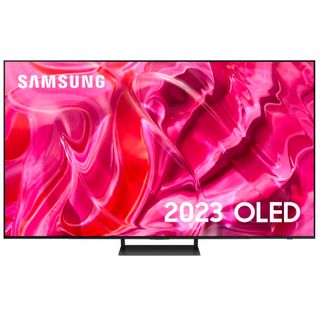
The best 75-inch for most people
QD-OLED quality picture for cheaper than before, plenty of gaming features and a sleek design make one excellent package that puts the Samsung S90C at the top of the pile for the 75-inch size range.

The best budget 75-inch TV in the US
Want mini-LED and plenty of features in a big-screen size without paying a premium? The U7N could be your perfect TV.

The best budget 75-inch TV in the UK
It doesn't have the best picture around, but the Samsung CU8000 does net you a big, colorful, feature packed TV on a budget.

The best mid-range 75-inch TV
If you want a great TV for movies, the Hisense 75U8N rivals mini-LEDs from premium brands, like Samsung and Sony, but at a mid-range price. It's also a solid choice for big-screen gaming.
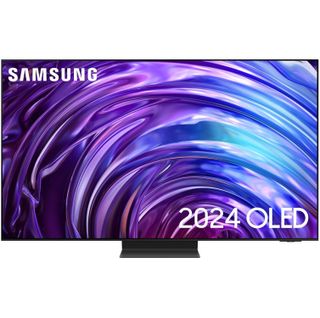
The best premium 75-inch TV
Although it comes with a price, the Samsung 77S95D feels every bit premium thanks to its outstanding picture, gaming prowess and all-around quality.
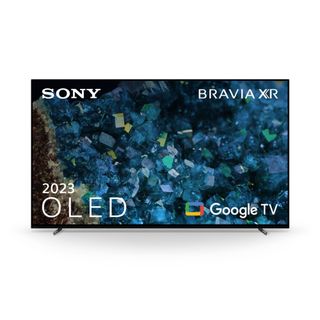
The best 75-inch TV for sound
With its ability to pass sound through the screen and its direct link between audio and what's happening on screen, the Sony A80L is ideal for those who want great built-in sound.
Load next products

The best 75-inch TV for sports
The Samsung QN90D mini-LED may be the perfect TV for sports thanks to its superb motion handling and high full-screen brightness. It's also a great TV for gaming.
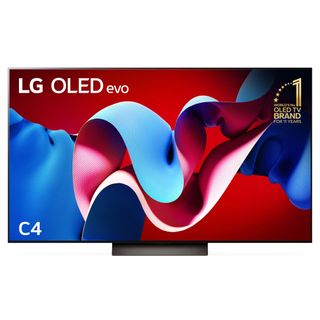
The best 75-inch TV for gaming
The LG C4 comes well stocked with gaming features, including 144Hz refresh rate, and does it with an excellent quality, big-screen OLED picture.
The best 75-inch TVs 2024
Why you can trust TechRadar
Below, you'll find more in-depth write-ups about each TV we've chosen for this list. We've tested and reviewed each one of these TVs and you can find links to their full reviews in each entry.
The best 75-inch TV for most people
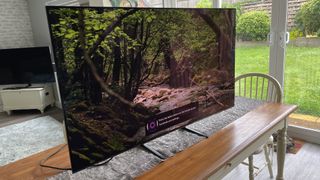
Specifications
Reasons to buy
Reasons to avoid
✅ You want excellent value QD-OLED: The S90C offers QD-OLED for cheaper than ever before – and keeps the picture quality spectacular.
✅ You want a big, screen QD-OLED gaming experience: The S90C has every gaming feature you'd need and performance to match, making it an excellent gaming TV.
❌ You want Dolby Vision: The S90C doesn't support Dolby Vision for gaming or movies, much like every other Samsung TV.
❌ You want the brightest big screen OLED: The LG G3, Samsung S95C and S95D OLED TVs are all brighter than the S90C.
The Samsung S90C is our top pick for the best 77-inch TV overall. At a 77-inch screen size, any refinements introduced by picture processing will make a visible difference, and the S90C’s Neural Quantum 4K processor, the same one found in Samsung’s flagship S95C QD-OLED model, provides notably better upscaling for HD and standard-definition movies and TV shows, something it does using AI-based tech.
The second-gen QD-OLED display panel used in the S90C presents a notably brighter picture than what you get with regular OLED TVs, even ones priced around the same level as the S90C. Contrast is also strikingly good, and the picture retains uniform contrast and color even when viewed at far off-center seats. The S90C’s measured brightness is around 20% less than what you get from top-tier OLED TVs like the S95C or the LG G3, but it's nonetheless impressive when you take the mid-range S90C’s more reasonable price into consideration.
The S90C has an appealing design with a thin profile, although it swells out in the middle due to its internal connections box. Inputs include four HDMI 2.1 ports with support for 4K 120Hz signals and VRR for gaming, and like other Samsung TVs, it has a Gaming Hub feature for playing cloud-based games from services like Xbox and Nvidia GeForce Now.
One of the reasons why we rate the Samsung S90C so highly is its value. It’s only slightly more expensive than the LG C3 OLED, while delivering notably better brightness and even better built-in sound. You can get better brightness from the pricier Samsung S95C and LG G3, but, as we stated in our review, we can “actually see some home theater fans, especially those fond of watching films in darkened room settings, potentially preferring the slightly gentler, less explosively dynamic look of the S90C’s pictures,” compared to those premium models.
Read our full Samsung S90C review
The best budget 75-inch TV in the US
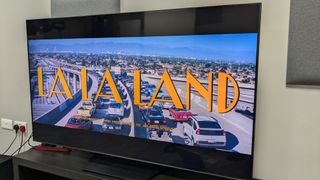
Specifications
Reasons to buy
Reasons to avoid
✅ You want great pictures without breaking the bank: The U7N has an impressive picture with great contrast, easily outperforming its budget price.
✅ You need a gaming TV on a budget: Stacked with features including Dolby Vision gaming and 4K 120Hz support, the U7N covers nearly all the gaming bases.
❌ You don't want to tweak any settings: We found that some experimenting with picture settings was required to get the best out of the U7N.
❌ You want excellent sound: The U7N's sound may suit some, but we found it to be a little lacking. This TV is best paired with a soundbar.
If you want the most out of your money in a big-screen size, the U7N provides nearly all you need, including a colorful and balanced picture with plenty of detail and a near-full suite of gaming features plus great gaming performance.
The U7N proves that the best mini-LED TVs don't have to cost a crazy amount. It delivers impressive textures and details, bold and vivid color and solid contrast – especially if you feed it 4K sources. While it suffers from some backlight blooming (especially when viewed off-center) and its picture requires some setup to get the best from it, the U7N's picture for the price is hard to argue against.
Big-screen gaming is also well-covered by the U7N, with a list of features that includes Dolby Vision gaming, VRR (HDMI, AMD FreeSync and Nvidia GSync all included) and up to a 4K 144Hz refresh rate. It also delivers brilliant picture quality and performance for your games.
While the U7N is not without compromises – it has average built-in audio and some playing around with the picture settings is required - this Hisense provides almost unbeatable value, letting more people experience mini-LED picture quality without paying excessively for it.
Read our full Hisense U7N review
The best budget 75-inch TV in the UK

Specifications
Reasons to buy
Reasons to avoid
✅ You want colorful pictures: The CU8000 thrives when displaying colorful scenes, maintaining a natural look at the same time.
✅ You want a big screen on a budget: The CU8000 is one of the cheaper options on this list, so if you're after a large TV for less, this is it.
❌ You want the most accurate overall picture: The CU8000 suffers from black uniformity issues and average contrast due to its edge-lit panel.
❌ You need great built-in sound: We found the CU8000's sound to be thin, lacking both bass and directionality.
The Samsung CU8000 offers a bright colorful picture, with surprisingly good sharpness and a natural look. Its design is eye-catching and its gaming performance is good, despite lacking a lot of the premium gaming features of other TVs. If you're after a big screen at a budget price, the CU8000 is certainly an option.
First and foremost, the Samsung CU8000's picture is a mixed bag. Whilst it has impressively vivid colors and great detail, especially for a large LED TV, the CU8000 also has its pitfalls. As it's an edge-lit TV, black uniformity (the ability to evenly display black across the screen) is not good and black tones often take on a gray color and sometimes cloudy look. Its contrast is also lacking as a result of this. That's not to say the CU8000's picture is bad, but this is definitely something to be aware of. However, for the price at larger sizes, it's one of the better LEDs we've tested.
One of the CU8000's strongest points is its design. Despite being one of Samsung's more budget sets, it's great to see that care was taken in the design of the CU8000, which has a stunningly slim depth, trim bezel and solid build quality. That may not be one of the most important factors to some, but it's a very nice touch.
Whilst the Samsung CU8000 lacks a lot of gaming features we look for such as 120Hz support and VRR, graphically it was and crisp enough and handled motion well, thanks to a low 10ms input lag time. It certainly isn't one of the best gaming TVs on the planet, but it's adequate.
The Samsung CU8000 is a good enough option for those looking for a budget big screen, mainly thanks to its colorful picture and attractive design. Whilst its black levels aren't good and its gaming features are lacking, it provides what you need for a competitive price. If you can stretch your budget a bit more though, it might be worth it.
Read our full Samsung CU8000 review
The best mid-range 75-inch TV

Specifications
Reasons to buy
Reasons to avoid
✅ You love movies: With excellent brightness and support for Dolby Vision and HDR10+ formats, movies in 4K look amazing.
✅ You want a mini-LED TV that's affordable: It stands up well against mini-LEDs from premium brands, just more budget-friendly.
❌ You like watching in big groups: Picture quality suffers if someone isn't sat in the center of the TV, not great for sports nights.
❌ You don't want to edit settings: Filmmaker Mode needs adjustments when watching movies with Dolby Vision HDR.
The Hisense 75U8N is our top pick if you're looking for a mid-range 75-inch TV that still performs exceptionally well, especially when it comes to TV shows and movies.
Hisense has significantly boosted the 75U8N's brightness levels and introduced other picture quality refinements compared to last year's U8K series. In our review, we called this Hisense TV "astonishingly bright", which meant pictures looked phenomenally punchy with a lot of detail and depth. When it comes to HDR support, there's Dolby Vision (IQ), HDR10+, HDR10, and HLG formats here. This makes the 75-inch version a top choice for movies, but we also enjoyed watching sports during our testing. Just bear in mind that the TV’s off-axis uniformity wasn't great, meaning viewers at off-center seats experience faded color and contrast.
There are two HDMI 2.1 ports with 4K 144Hz and 4K Dolby Vision gaming support here. Plus a Game Bar menu that lets you change the picture settings. These features don't make it one of the best gaming TVs (we'd want to see four HDMI ports), but a solid choice for anyone who wants a huge TV for TV shows and movies that will also do for gaming on the side. If you're in the US, you'll get the Google TV smart TV platform, which we rate as one of the better options for streaming and browsing content. But you'll get Hisense’s own VIDAA platform in the UK, Australia, and elsewhere.
The U8N isn't exactly cheap, but for a solid mid-range choice it's much more affordable than many of its mini-LED rivals at this 75-inch size.
Read the full Hisense U8N review
The best premium 75-inch TV
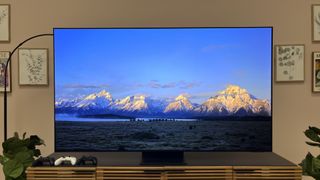
Specifications
Reasons to buy
Reasons to avoid
✅ You want a spectacular picture: Lifelike, accurate detail, stunning contrast, and dynamic color are just a few things that make the S95D's picture so good.
✅ You value both design and performance: With its floating stand and razor-thin profile and bezel, the S95D is one of the most stunning-looking TVs you can buy.
❌ You want an accurate Filmmaker Mode: Although it delivers extraordinary pictures, we noted black crush in darker scenes with the S95D in Filmmaker Mode.
❌ You are on a budget: A TV with this many features that delivers this level of quality comes at a higher price than other big-screen sets.
Similar to its predecessor, the Samsung S95C, the new Samsung S95D, takes OLED picture quality to the next level by combining an OLED display panel with QLED technology. But the S95D manages to be even brighter than the S95C, which previously reigned as the OLED TV brightness champ.
Samsung’s AI enhancements for the S95D bring unsurpassed detail levels to both 4K and lower-resolution pictures alike. Images are characterized by strong contrast and bold colors, and plenty of detail can be seen in dark, shadowy images. A new feature that arrives with the S95D is an anti-reflection screen that makes pictures look great even in bright room lighting, eliminating a long-standing issue with OLED TVs.
It’s not just movies that look great on the S95D, but Samsung also made it a powerhouse for gaming. It features 144Hz refresh rate, ALLM, VRR and AMD FreeSync Premium Pro support on all four HDMI 2.1 ports, and also has Samsung Gaming Hub for cloud-based gaming from services including Xbox, Nvidia GeForce Now, Luna, Utomik, and more.
Design-wise, the S95D is a beautiful-looking TV with a super-slim profile and bezel and a “floating” stand that makes the TV look airborne even when not wall-mounted. And if you do choose to wall-mount it, an external One Connect Box makes that type of installation elegant and easy.
Read our full Samsung S95D review
The best 75-inch TV for sound
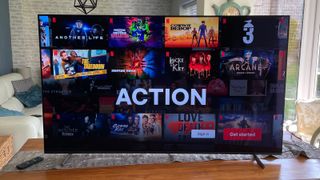
Specifications
Reasons to buy
Reasons to avoid
✅ You want excellent built-in sound: With multiple sound-focused features such as Acoustic Surface Audio+, the A80L's built-in speakers stand out from the crowd.
✅ You want highly detailed images: The A80L delivers natural-looking images that are loaded with detail.
❌ You want the best value OLED: The A80L's impressive performance comes at a higher price than rival sets from LG and Samsung.
❌ You want the brightest OLED TV: Other OLED TVs including the LG G3, Samsung S95D, and Samsung S90C have a brighter picture than the Sony A80L.
Sony’s A80L is the company’s mid-range OLED TV, and it’s a great option for anyone who wants to avoid using a soundbar in their setup. That’s because the A80L has the company’s Acoustic Surface Audio+ tech, which turns the entire screen into a speaker, and is augmented by two subwoofers for more full-range audio. This technology has the dual advantage of making sound effects and dialogue appear more accurately positioned than you’d normally hear with most TVs, and also with some soundbars.
Sony TVs are known for their high-quality picture processing, and the A80L’s Cognitive Processor XR manages to make even standard-definition streamed video look good. As you’d expect from an OLED TV, the A80L delivers notably deep blacks, but also with well-defined shadows and rich colors. Brightness is just average compared to premium OLEDs such as Sony’s own A95L, making the A80L a better option for viewing in a light-controlled space.
Sony has made recent improvements to the gaming features on its TVs, including a pop-up Game Menu that makes it easy to adjust game-related settings without having to escape to the TV’s setup menu. Beyond that, the A80L is “Perfect for PS5,” which means it can automatically tune HDR and switch between game genres when a PlayStation 5 console is connected. That’s great for PS5 owners, but if you want to plug in additional consoles, note that only two of its four HDMI ports support HDMI 2.1 features such as 4K 120 Hz and VRR.
Read our full Sony A80L review
The best 75-inch TV for sports

Specifications
Reasons to buy
Reasons to avoid
✅ You have a bright viewing environment: The QN90D's high brightness and anti-reflection screen effectively reduce screen glare in bright rooms.
✅ You watch a lot of sports: The QN90D's high brightness, wide viewing angle and great motion handling make it an ideal TV for sports fans.
❌ You want the best value mini-LED: Mini-LED TVs from Hisense and TCL can provide similarly great performance for less money.
❌ You want Dolby Vision HDR: Same as with other TVs from Samsung, the QN90D's high dynamic range support is limited to HDR10+, HDR10, and HLG.
Watching sports on a big 75-inch screen is an incredible experience, and the 75-inch Samsung QN90D mini-LED TV seems almost custom-made for that purpose. It has an exceptionally bright picture that looks uniformly good from all angles and an anti-reflection screen to reduce glare from room lights. Motion handling is also excellent, making fast action sports, and games as well, look solid and blur-free.
When we reviewed the Samsung QN90D, peak brightness was measured at an impressive 2.192 nits and full-screen brightness at 680 nits. Those numbers rank the QN90D in the upper echelon of TV brightness, and it also has precise local dimming for deep and detailed shadows when watching movies.
It’s not just sports and movies that look great on the QN90D’s expansive 75-inch screen but games as well. With four HDMI 2.1 ports with support for up to 4K 144Hz, VRR including AMD FreeSync Premium Pro, and ALLM, the QN90D is fully kitted out with gaming features. In our tests, input lag measured an impressive 9.9ms. The QN90D also features Samsung’s Gaming Hub, which lets you play games from cloud-based services such as Xbox, Geforce Now, Utomik, Luna, and more.
For such a big TV, the QN90D is startlingly slim, measuring just under 1-inch in depth. It comes with a sturdy metal base for support, and its bezel-less display gives it an “all-picture” look. Samsung includes its eco-friendly SolarCell Remote, which draws power from an integrated solar panel and can also be charged through its USB-C port. Despite being slim, the QN90D has powerful built-in sound, with its 4.2.2-channel, 60W built-in speakers delivering accurate sound effects and dialogue placement with the help of Samsung’s Object Tracking Sound+ feature.
Read our full Samsung QN90D review
The best 75-inch TV for gaming
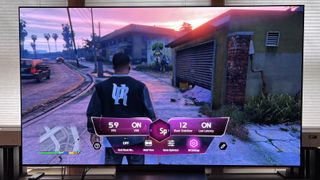
Specifications
Reasons to buy
Reasons to avoid
✅ You watch a lot of movies: The C4 delivers excellent picture quality, and its new Dolby Vision Filmmaker Mode takes performance a step further
✅ You're a gamer: 4K 120Hz and Dolby Vision gaming supports, along with many other gaming features make the C4 a brilliant OLED TV for gaming.
❌ You want the sound quality to match the picture: The C4's average sound quality doesn't match up to the quality of its picture, or its gaming features.
❌ You want the cheapest gaming TV: Mini-LED TVs from Hisense and TCL have many of the same features as the C4, and LG's B4 OLED is an even cheaper option.
The LG C4 provides big-screen OLED gaming at a more affordable price than premium OLED TVs such as the Samsung S95D. It also has superb picture quality, excellent gaming features and an attractive, slim design.
Gaming is one of the C4's strong points. Four HDMI 2.1 slots, fully kitted with 144Hz refresh rate, VRR (HDMI forum, AMD FeeeSync and Nvidia G-sync), ALLM and Dolby Vision gaming all feature on the LG C4. Plus, it comes with LG's useful Game Optimizer, which selects the most relevant settings for your gaming session.
Picture quality is another highlight of the C4, which has excellent contrast and detail. It also has improved brightness over its predecessor, the C3, leading to stronger, bolder HDR highlights that pop when watching 4K Blu-rays.
The C4 uses the latest version of LG's own smart TV platform, webOS 24, which has had its home menu trimmed down and neatened to an easy-to-navigate layout. It also has accessibility features such as an AI chatbot to aid with tech issues users may encounter.
The C4 thrives as a gaming TV, its superb picture combining with an extensive list of gaming features. Sure, other cheaper TVs have some of the same features, but the C4 really does tick all the gaming boxes.
Find the best deals on LG products with our LG coupon codes.
How to choose the best 75-inch TV
Is a 75-inch TV too big for a living room?
While many promotional and marketing images might lead you to believe that a 75-inch TV is too big for a living room, this really isn't the case for lounges of an average size.
So long as you have a table or stand that's accommodating to the TV's large size, and create adequate space for peripherals like soundbars and speakers, a 75-inch TV won't take up as much real estate as you might think. And if you're thinking of mounting a 75-inch TV on wall using one of the best TV wall mounts, you'll also want to consider how much space it'll take up on the wall.
Do keep in mind that you may have to rearrange the room around the TV for the best possible viewing experience, however.
How far should you sit from a 75-inch TV?
For optimal viewing with a 75-inch TV, we'd recommend sitting roughly 50-60 inches away from the screen for a fully immersive experience. Rearranging the furniture in your room to accommodate this will help, and it could be as simple as slightly adjusting your couch.
How much does a 75-inch TV cost?
The very best 75-inch TVs can vary wildly in price. The LG G3, for example, will run you an eye-watering $3,500 / £2,770 (around AU$5,400), while Hisense present a much more affordable option in the U8K at $1,300 (around £1,000 / AU$2,000).
The difference in price here seems drastic considering both examples offer excellent picture quality. It all depends on how much you're willing to pay for extra bells and whistles and design sensibilities, such as the G3's wonderfully thin design and best-in-class options for gaming.
Do be extra wary about TV sales that sound too good to be true, though. If you see a 75-inch 4K TV for around $600 / £600, it's probably going to let you down in terms of picture performance with bad backlighting and cheap edge-lit LED panels that produce poor black levels and contrast.
During key sales periods such as Black Friday, of course, those pricing expectations are a little different, so in any case it's worth paying attention to how much a 75-inch TV was at launch.
Some Hisense TVs can have a high launch price and quickly undercut it for a sense of value, and often you can get a good discount at least a few months after release, but in general you should be looking for the largest discount compared to a previous price, rather than just the cheapest 75-inch TV out there. And if you're low on cash, you should probably be opting for a decent 65-inch TV, rather than a half-baked 75-inch one.
Once you get to a 75-inch size, too, 8K TVs really become a smart investment too. That's because the greater number of pixels over 4K (33 million rather than eight million) ensures far greater detail at that size. A 55-inch 8K TV doesn't really make much of a difference, but a 75-inch 8K TV certainly does.
What 75-inch TVs are coming in 2024?
Many TV makers have announced models with a 75-77-inch screen size for 2024. Samsung will update its OLED lineup with the new S95D and S90D, both in a 77-inch screen size, and its QLED lineup will see new 75-inch QN90D mini-LED and Q80C regular LED offerings. A new QN900D 8K mini-LED model is also on its way that uses the company’s latest-gen Neural Quantum Processor 8K Pro and 240Hz VRR support for gaming.
LG will also update its OLED TV lineup for 2024 with new 77-inch G4, C4 and B4 models, all of which will see picture quality and usability enhancements.
On the budget mini-LED TV front, TCL will introduce new QM751G and QM851G models in a 75-inch screen size. Hisense and Sony will also have new mini-LED and QLED TVs, though both companies have yet to release details on specific models.
How we test the best 75-inch TVs
We test the TVs we selected for this best 75-inch guide not just on picture, but on every aspect including gaming performance, smart TV platform and menus, ease of use, built-in audio and even the overall physical design. We'll test out the features within the TV to make sure they're up to scratch and reflect this in our reviews.
75-inch is a big screen so you're often going to pay a premium for the very best, but we also look out for those TVs that give you value - performance without the price tag, so in this guide we've included TVs to suit every budget by testing across a wide range of prices.
We always strive to test these TVs with a variety of sources including Blu-ray, streaming, live TV, lower-resolution programs and movies and more so that we can fully test the TVs picture quality across the board, not just on the best possible picture.
Some of our reviewers will be testing with different equipment and in different conditions, but we will always aim to make this clear and to be as fair and as consistent as possible.
Latest updates to this 75-inch TV guide
Read latest updates
September 26 2024
Replaced Samsung QN90C with Samsung QN90D as 'best 75-inch TV for sports'
August 28 2024
Replaced Sony 75X90L with Hisense 75U8N as 'best mid-range 75-inch TV.'
July 31 2024
Added boxes with two reasons to buy and avoid for each entry labelled 'Buy it if' and 'Don't buy it if'
July 2 2024
Replaced Hisense U8K with Hisense U7N as 'best budget (US)'.
June 5 2024
Replaced Sony X90L with LG C4 as 'best 75-inch for gaming'. Sony X90L replaced Samsung Q80C as 'best mid-range 75-inch TV'.
May 6 2024
Replaced Samsung S95C with new Samsung S95D as 'best premium' option.
March 11 2024
Added info on new 75-77-inch TVs announced for 2024 to 'How to Choose' section.
February 7 2024
Introduced 'quick list' grid which summarizes each entry in the list and why we've chosen them for those looking for quick answers.
Get daily insight, inspiration and deals in your inbox
Sign up for breaking news, reviews, opinion, top tech deals, and more.

Al Griffin has been writing about and reviewing A/V tech since the days LaserDiscs roamed the earth, and was previously the editor of Sound & Vision magazine.
When not reviewing the latest and greatest gear or watching movies at home, he can usually be found out and about on a bike.